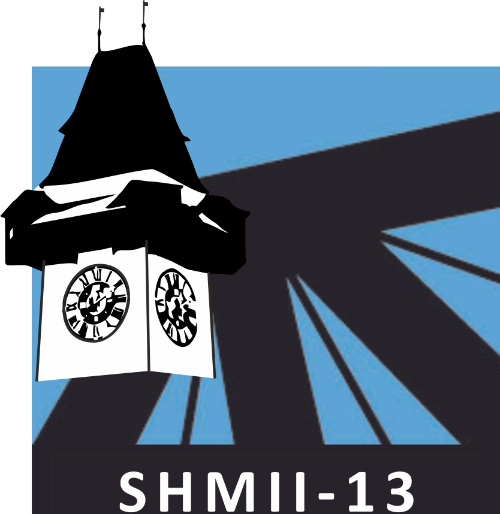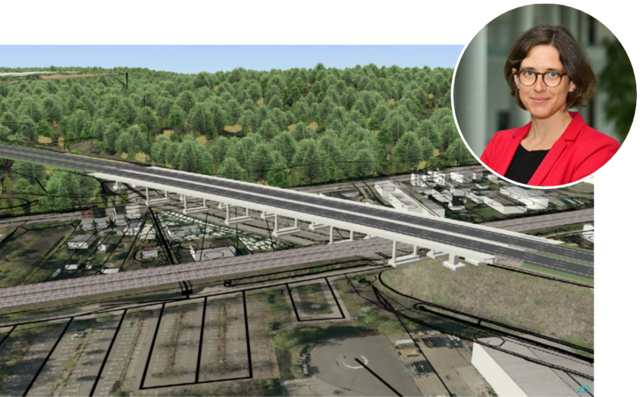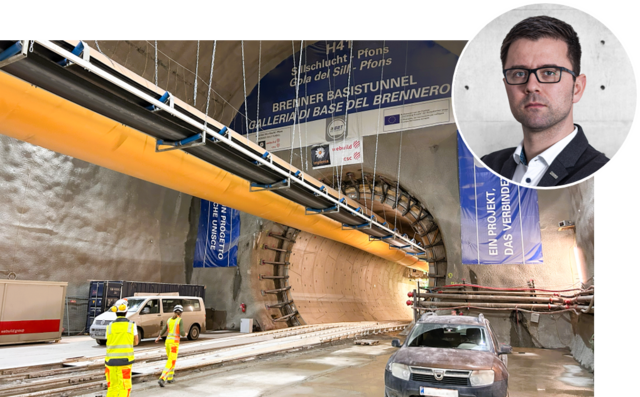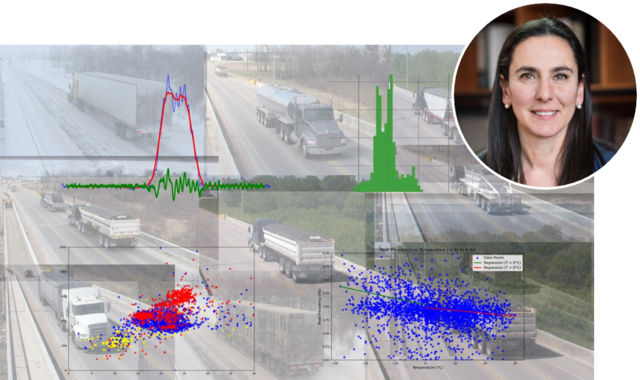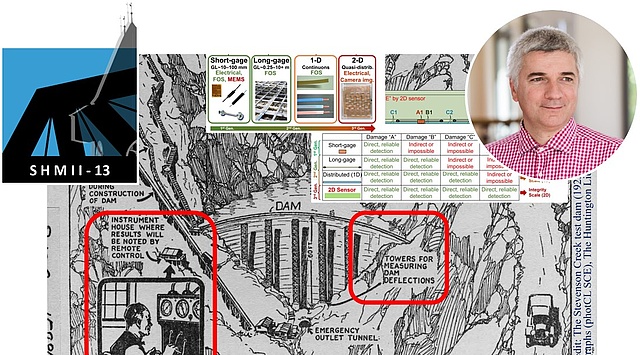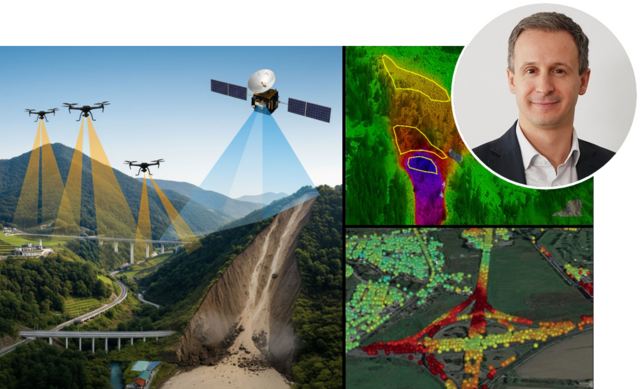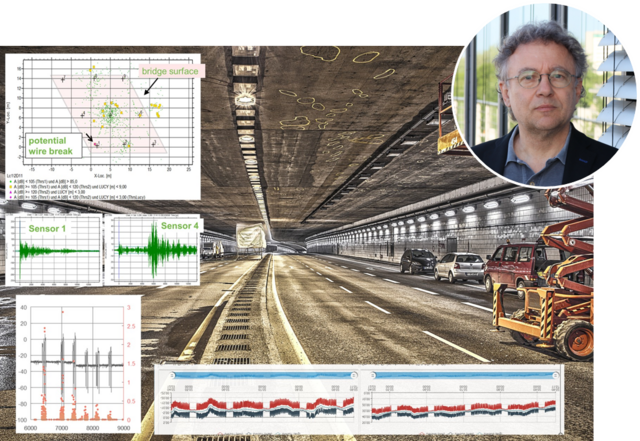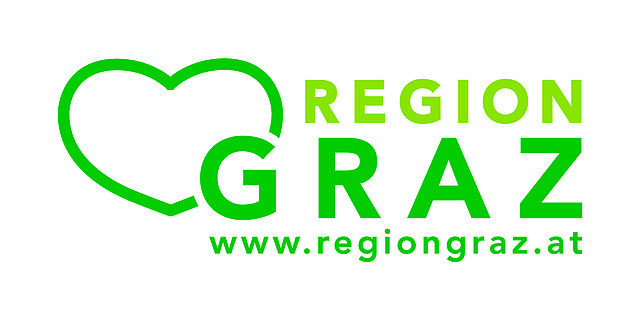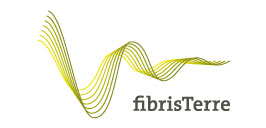Prof. Sylvia Keßler, Helmut Schmidt University/University of the Federal Armed Forces, Hamburg, Germany
Digitalizing Infrastructure: Advancing Structural Health Monitoring for Smarter Asset Management
Our transportation infrastructure faces increasing demands, driven by larger and heavier trucks that place growing stress on bridges with ever-higher frequency. At the same time, much of this infrastructure is aging, with many structures having reached or exceeded their intended service lives and operating near their capacity limits. Addressing these challenges requires innovative tools and approaches to monitor, evaluate, and maintain infrastructure assets effectively.
Structural Health Monitoring (SHM) offers a transformative solution by enabling continuous, sensor-based condition assessment. SHM systems can track changes in structural behavior, detect damages, and provide valuable data for condition evaluation and prediction. However, to fully realize the potential of SHM, the integration of sensor data into a seamless digital process chain—built on Building Information Modeling (BIM)—is essential. This linkage ensures that data is not only collected but also analyzed and utilized in a way that is directly connected to the structure's digital twin.
Dr. Christoph Monsberger, ACI Monitoring GmbH, Graz, Austria
Distributed fiber optic sensing in civil structural health monitoring at the next level – Realization of a comprehensive sensing network along the Brenner Base Tunnel
The Brenner Base Tunnel (BBT) is one of the key civil infrastructure projects currently under construction world-wide and will be the longest underground railway connection globally with a total length of about 64 km once completed. Its service lifetime of 200 years implies essential requirements on the tunnel design, with focus on reducing risks and enabling optimized maintenances works based on appropriate monitoring. The tunnel owner BBT SE has therefore initiated an enhanced distributed fiber optic sensing (DFOS) network inside concrete tunnel lining segments for structural monitoring without human access. This contribution introduces the designed DFOS network, consisting of more than 35 km sensing cable along numerous tunnel cross-sections, spread over more than 30 km tunnel drive and two different construction lots.
Associate Prof. Maria Pina Limongelli, Politecnico di Milano, Italy
Bridge in service structural monitoring: the SCSHM benchmark
In 2023, the Data-Enhanced Infrastructures Management Committee of the Society of Civil Structural Health Monitoring (SCSHM) launched a benchmark study on in-service structural monitoring of bridges. A comprehensive dataset, developed in collaboration with the University of Manitoba, was made available to the engineering community to promote the validation and comparison of methods for structural performance evaluation.
The benchmark structure is a span of a multi-supported bridge with a total length of 291 meters.
A monitoring system was installed on the structure and operated for approximately nine months. The instrumentation included strain gauges and thermocouples to record strain measurements and air/structure temperatures beneath the deck.
This presentation outlines the details of the structure, the objectives of the study, the dataset shared with the engineering community, and reports some initial applications that leverage the dataset to validate in-service monitoring approaches.
Prof. Branko Glisic, Princeton University, USA
Stevenson Creek Experimental Dam Monitoring Centenary: Overview and Perspectives of Strain Sensing and Strain-Based Monitoring of Civil Structures
The year 2025 marks the centenary of Stevenson Creek Experimental Dam tests. While the sensors were used in monitoring real civil structures under the test loading since the 19th century, these early sensors measured external changes in the structures, mostly deflections, and relied on direct human access to sensors to read the measurements. To the best of the author’s knowledge, the first practical sensor to measure internal changes in civil structures with indirect remote reading capability was strain sensor, and the first such sensor was based on vibrating wire (VW) principle, invented in Germany in 1919.
The Stevenson Creek Experimental Dam Project motivated American scientists to develop, in 1924, a resistive strain sensor consisting of a stack of carbon discs. Several such sensors were embedded in the dam, and the scientists performed reading of the sensors remotely, using wired connections. This 100-year anniversary represents the moment for reflection on advancements in the development of strain sensors for applications in civil structures, and the impact that strain-based monitoring has in the field of structural health monitoring.
The aim of this presentation is to summarize the progress in strain sensing technologies over the last hundred years, overview the techniques for detection of unusual structural behaviors that various strain sensor types enabled, and present perspectives on the future developments related to strain-based monitoring.
Prof. Paolo Mazzanti, Sapienza University of Rome, Italy
The Power of Optical and SAR Imaging for Remote Monitoring of Land and Infrastructure
The growing availability of high-resolution multi-frequency imagery from satellite, aerial, and ground-based platforms is revolutionizing the monitoring of geohazards, land deformation, and the structural health of critical infrastructure.
State-of-the-art image processing techniques—including Synthetic Aperture Radar Interferometry (InSAR), Digital Image Correlation (DIC), Speckle Tracking, Change Detection, and Structure-from-Motion (SfM) photogrammetry—enable the extraction of surface displacements and structural changes with unprecedented spatial density, precision, and temporal resolution. These fully remote and non-invasive methodologies support the systematic observation of large-scale areas, offering significant benefits for continuous and pervasive monitoring. Their integration into operational workflows enhances the ability to assess risks, improve infrastructure resilience, and inform data-driven decision-making processes in both natural and built environments.
Prof. Christian Sodeikat, Ingenieurbüro Schiessl Gehlen Sodeikat GmbH, Munich, Germany
SHM for bridges – the work flow
Numerous bridges in Germany and worldwide are subject to high stress from increased heavy traffic and their advanced age. Due to advanced damage and unfavourable construction methods, many bridges can no longer be repaired at a reasonable cost and must be replaced with new structures. However, to maintain traffic flow, they often need to remain in operation for years and be monitored in real-time for deterioration to ensure safe continued use. Complex measurement systems are now available for this purpose, capable of detecting various structural conditions, such as strain, or events, such as acoustic emissions from wire breaks of the prestressed reinforcement.
The planning of a monitoring system should proceed in a stage manner. The first step involves identifying the structural weaknesses and potential damage mechanisms of the structure, such as wire breaks, crack formation of the cross-section or reinforcement corrosion etc. Based on this, the structural responses resulting from the damage mechanisms are determined. In the final planning step, the measurement systems suitable for measuring the structural responses are selected.
This keynote presents the workflow for planning a monitoring system and provides examples of the implementation, visualization and evaluation of various measurement systems and measurement data in a common monitoring system.
SHMII-13
01.-05. Sept. 2025
Graz, Austria
web: shmii-13.tugraz.at
e-mail: shmii-13@tugraz.at
Conference Flyer: Flyer download
Sponsoring Brochure: Brochure download
